Small Group Experiential Travel
Tour Code
TA4
Start
Taipei (TPE)
End
Busan (PUS)
Tour type
Cultural
Max Group Size
18
When To Go
Mar, Oct
Activity Level
2 - Moderate
Overnight in
Seoul, Pusan, Mt Seorak, Haeinsa, Gyeongju, Taipei, Sun Moon Lake, Tainan, Taichung
- Overview
- Info & Inclusions
- Itinerary
- Map & Hotels
- Photos
- Dates & Prices
Highlights
- Vibrant Taipei
- Historical Tainan
- Seoul: city tour & the DMZ
- Welcome dinner at top of Namsan Seoul Tower
- Fast train to Busan - city tour
- Unique & beautiful Jeju Island
- Immersion in Korean culture, ancient & modern
Description
From the bustling neon-lit streets of Taipei to the serene temples of ancient Tainan, this tour offers a captivating contrast of old and new. Explore the modern marvels of Seoul, including the iconic Namsan Seoul Tower, and journey to the historic DMZ. Then, unwind on the stunning island of Jeju, a natural wonder with breathtaking landscapes.
Price Includes
- Full-time Tour Leader services & local guides at various locations.
- Breakfast and dinner (mostly at local restaurants) are included daily.
- All transport, accommodation, sightseeing and entrance fees for sites noted as 'visited' in the detailed itinerary.
- Gratuities for restaurant staff, porters, local guides
- Airport transfers for land & air customers and for early arriving/late departing land & air customers who book their extra hotel nights through us.
Exclusions
- International airfare to/from the tour.
- Tour Leader gratuities, lunches, drinks, personal items (phone, laundry, etc), domestic and international (if applicable) air taxes, and any excursions referenced as 'optional'.
- Airport transfers for Land Only customers.
- Optional trip cancellation insurance.
Trip Info
- Seasonality and Weather:
Our fall departure coincides with the beginning of the drier time of year and cool temperatures with highs ranging 15-18 C (60-66 F). Rain showers can occur at any time, though their likelihood decreases the later we get into the fall. Our fall date is loosely set to coincide with autumn leaf colour, though this varies from year to year.
Spring will experience slightly cooler temperatures and the same possibility of rainfall. Our spring date may feature annual cherry blossoms at some locations. - Transport and Travel Conditions:
We rate this tour difficulty 'Level 2', which relates mostly to some full days of travel, uneven surfaces, and plenty of time on your feet. Our pace is leisurely, but we have some full days of activities and have multiple walking tours of sites for several hours. We also have short walks to/from dinner at the end of our days. We do, however, time the tour for times when heat is not a factor. Our accommodations are comfortable and there will likely be baggage handling assistance to/from your room.
There is also a very strong culinary element to this trip. Breakfasts feature Asian as well as Western items, but our dinners out at local restaurants will feature a wide range of local specialties. Eating is very much a cultural experience in this part of the world, and this aspect of our program is an integral part of the overall experience. Though individual tastes and requirements will be taken into account by your leader who will be organizing our evening meals on-the-go, if you are strictly a meat-and-potatoes person, or a strict vegan/gluten-free etc, you may find your preferences significantly challenged on this tour.
Am I suitable for this tour? Please refer to our self-assessment form - Accommodation:
All hotels are centrally-located, Western style, air-conditioned, 3-4 star standard with private bath facilities. All hotel rooms are well equipped and usually include coffee/tea making facilities. Most hotels have hairdryers and irons. Some hotels have indoor/outdoor swimming pools.
Porters are generally available (see 'Inclusions'). - Activity Level: 2
These are particularly busy tours that feature a lot of moving around, sometimes by train and short journeys on local transport. Walking tours of towns and cities are leisurely but you should be prepared to be on your feet for several hours. Some of our cultural trips that occur at high altitude and/or require greater independence with baggage handling (at hotels, airports, train stations) also fall into this category.
To learn more about the Activity levels, please visit our tour styles page. - Staff and Support:
Tour Leader throughout, local guides at various locations. - Group Size:
Maximum 18 plus Tour Leader
Download Itinerary
- Day 1:Arrive in TaipeiArrival in Taipei -- welcome to Taiwan!
Lying off the south-eastern coast of mainland Asia, and across the Taiwan Strait from China, Taiwan is an island truly on the edge of the Pacific. One of the most densely-populated places on earth, this is also a natural wonderland with steep mountains, magnificent forests and an array of scenic attractions. Being situated on the western edge of the Pacific "ring of fire", continuous tectonic movements have created majestic peaks, rolling hills and plains, spectacular coastlines, and other natural wonders. 8 national parks and 13 national scenic areas preserve Taiwan's best natural ecological environment and cultural sites.
Overnight in Taipei.
Included Meal(s): Dinner - Day 2:Taipei: City TourWe will spend today exploring vibrant Taipei, modern and old, where Taoist temples sit alongside shopping malls. Many have rated Taipei as one of the region's most dynamic, comfortable and liveable cities. Situated at the northern tip of the island, the capital is located on the Tamsui River, about 25 km southwest of the Pacific Ocean. This is the political, economic, and cultural center of Taiwan. Originally founded in the early 18th century, Taiwan quickly became an important center for overseas trade in the 19th century. Today this truly is one of Asia's most dynamic and fascinating cities. Taipei is the thriving heart of Taiwan and the bustling centre of commerce, government and culture.
Our sightseeing will first take us to the world-famous National Palace Museum, the world's largest collection of Chinese artifacts. Here we will see porcelain, paintings, jade, bronze, tapestries and other art objects that once belonged to the emperors of China. This truly is a breathtaking selection of Chinese Imperial Art. In 1949, the collection was brought to Taiwan by Chiang Kai Shek's armies. Nearby is the wonderful Shung Ye Museum of Formosan Aborigines. This museum houses exhibits relating to the cultures and histories of the Taiwanese aborigines. These Austronesian peoples are related through blood or linguistic ties to people across precolonial Oceania, as far away as Madagascar. The tribes developed pottery, basketry, woodcarvings, musical instruments and colourful costumes. We will view some fine examples of Taiwanese aboriginal handicrafts and learn about the history of these people.
After a break for lunch we will continue with our tour of the city. A must is a visit to the National Chiang Kai-shek Memorial Hall, located in the heart of the city. This Memorial Hall (C.K.S. Memorial Hall) was constructed in memory of the former president of R.O.C. During our touring of the city we will pass by the Presidential Buildings Presidential Square. Originally built by the Japanese, it originally served as the governor's mansion.
A must during the tour will of course be a visit to Taipei 101, with its outstanding views over the city. Taipei 101 is a 101-floor landmark skyscraper that claimed the title of world's tallest building when it opened in 2004.
Overnight in Taipei.
Included Meal(s): Breakfast and Dinner - Day 3:Taipei - Lukang - Sun Moon LakeOn our journey to Sun Moon Lake we will make a stop in Lukang, the economic and transport hub of central Taiwan in earlier times. The saying "first Tainan, second Lukang and third Mengjia (today Wanhua District in Taipei)," illustrates the high position of the town in its glory days.
Lukang is a historic old town renowned for its well-preserved cultural and historical heritage. Once a bustling port in the 17th and 18th centuries, it served as the center where Taiwan's most affluent families amassed their wealth and power, capitalizing on the thriving commerce of the era. Despite the port losing its functionality due to sedimentation, Lukang has retained its enduring charm, serving as a timeless reminder of its glamorous past.
We visit Lukang Old Street, a leisurely stroll through the town adorned with red brick walls and floors, where historic relics await your discovery, each with an intriguing story to tell. During the Dutch and Qing eras of Taiwan, it was the most populous city and most important trading port in central Taiwan. There are more historical buildings here than anywhere in Taiwan except Tainan. Now the area is a lively shopping district, famous for traditional crafts and foods such as oyster omelets, shrimp balls, taro cakes, and meat buns.
After a break for lunch, we continue to the Sun Moon Lake area. In this idyllic environment we will see the deep blue waters of the lake and the mountainous surroundings from different perspectives. We will begin by enjoying a cruise across the lake, where we will benefit from fantastic views of the neighbouring mountains. We will then take in the lake from above as we experience the Sun Moon Lake Ropeway.
Overnight at Sun Moon Lake.
Included Meal(s): Breakfast and Dinner - Day 4:Sun Moon Lake - TaichungThis morning we continue to Taichung. Compared to Taipei, Taichung shows the more natural facet of Taiwan with attractive scenery and cultural experiences that you wouldn't find in Taiwan's bigger cities. We visit the Miyahara Building, a red-brick piece of architecture built by Miyahara Takeo, a Japanese ophthalmology doctor in 1927. After the surrender of Japan in 1945, Miyahara became Taichung Health Bureau, which slowly decayed and became an unused dangerous building. Fortunately, Dawn Cake, a pastry company renowned for its pineapple cakes, acquired the building and preserved Miyahara's original red-brick walls and archway. Visitors can appreciate the details of the historic architecture and also try Dawn Cake’s signature ice cream, bubble tea, and pastries wrapped in nostalgic packaging.
We'll begin our sightseeing with a visit to Wufeng Lin's Mansion, the former residence of Lin Wencha, the land and water admiral of the Qing Dynasty and representative example of official residences built in southern Fujian in Taiwan in the 18th century.
Our next stop is the 921 Earthquake Museum. At 1:47 AM on September 21, 1999, Taiwan experienced one of its worst natural disasters of the past century -- a 7.3 magnitude earthquake that devastated the central part of the island. The museum conserved the damage caused by Ji-Ji earthquake, such as collapsed school buildings, fault rupture, and elevation of riverbank, making it a precious teaching opportunity in the natural sciences.
Well also see the visually striking Taichung National Theatre (external view) before our dinner and overnight in the city.
Overnight in Taichung.
Included Meal(s): Breakfast and Dinner - Day 5:Sun Moon Lake - TainanThis morning our journey continues to Tainan, visiting Jingzaijiao Tile-paved Salt Fields en route. These were the first salt fields in Beimen, and are the oldest surviving tile-paved salt fields. They began as the Laidong Salt Field during the Qing Dynasty, and were moved here in 1818 AD. The name, Jiingzaijiao, was essentially derived from this particular landscape formation. To prevent salt crystals from attaching to the soil, salt miners at Pottery Dish Salt Field manually laid out broken debris of pottery onto the crystallizing ponds of salt fields. This approach resulted in purer and clearer salt being mined. Under the sunshine, the Pottery Salt Pan displays a resplendent, mosaic-like pattern.
We continue to Tainan, the oldest city in Taiwan and its capital for over 200 years. This city has managed to maintain much of its historical character, and its many historical sites make for some great exploration. Most of the Han migrants who sailed for Taiwan in the 17th and early 18th centuries landed on the islands southwest coastline, an area of flat land suitable for rice cultivation. Often compared to Kyoto, Tainan is an essential destination for those interested in history, religion and traditional ways of life.
Overnight in Tainan.
Included Meal(s): Breakfast and Dinner - Day 6:Tainan SightseeingToday we will enjoy a full-day of sightseeing in Tainan. This is an enticing city and a true highlight on the west coast of Taiwan. Tainan retains a stronghold of traditional Taiwanese culture, with frequent Buddhist parades and ceremonies. Our exploration will take us to several of Tainan’s historic sites and temples, as well as the Dutch fort of Anping on the coast. We will explore both the Chihkan Cultural Zone and the Confucius Temple Cultural Zone.
The Chihkan Cultural Zone covers the northern part of the old city, and highlights here include several temples and the Chihkan Tower. This was the site of Fort Provintia, built by the Dutch in the 1650’s. Meaning ‘eternity’ in Dutch, the Chihkan Tower has been a significant administration centre of Tainan ever since the Dutch invaded the country. The tower has been through various periods of Chinese rule, such as the Ching and Ming Dynasties, as well as a period of Japanese Colonization. Many of its original architectural features can still be seen today.
Anping is considered to be the cradle of Han Chinese civilization in Taiwan, and the first European base on the island. It took the Dutch nearly 10 years of hard work to construct the impressive Fort Zeelandia (Anping Old Fort) in the town of Anping. This noteworthy fortress is a clear reminder of colonial rule in the country. When constructing the fortress the Dutch selected a sandy peninsula in Tainan, and the strategic location was aimed at providing direct access for various supplies and support from Batavia (now known as Jakarta, Indonesia). Yanping Street is one of the oldest streets in Tainan. Also known as Anping Old Street or Taiwan’s 1st Street, it was the first established merchant street in the area. We will walk along the narrow and winding streets with their little shops and food stalls that cover a full range of souvenirs and handmade products.
As well as these sites we will also explore the southern half of the old city of Tainan where we see the well-preserved Great South Gate and the Confucius Temple. Built in 1665, the Confucius Temple is believed to be the oldest Confucius temple in Taiwan.
Overnight in Tainan.
Included Meal(s): Breakfast and Dinner - Day 7:Tainan - High-speed train to Taipei - Taipei SightseeingToday we will leave Tainan and travel back to Taipei by high-speed train. This high-speed line opened for service in 2007, using trains with a top speed of 300 km/h (186 mph). The journey time from Tainan to Taipei will take just over 90 minutes!
This afternoon we will complete our sightseeing of Taipei. A visit to the Taoist Lungshan Temple provides some insight into the local culture. Dedicated to Kuanyin, the Goddess of Mercy, this is one of the city’s most popular and busiest temples. Like most temples in Taiwan, the Temple worships a mixture of Buddhist, Taoist, and folk deities such as Matsu.
We will walk through the Dihua Street Area, where one can get a true feel for the city’s past. The old-town market has dozens of shops selling a variety of traditional goods such as Chinese medicines and herbs, temple icons and incense, spices and dried food, colourful bolts of cloth, and bamboo and wooden crafts. This is a fascinating patch of the past.
Built on a green hillside in 1969, the impressive Taipei Martyrs Shrine was architecturally inspired by the Hall of Supreme Harmony in Beijing's Forbidden City. The shrine is dedicated to the 390,000 soldiers killed in the service of their country during the War of Resistance against Japan and the civil war between the Chinese Republican and communist forces.
Overnight in Taipei.
Included Meal(s): Breakfast and Dinner - Day 8:Taipei, Taiwan - Seoul, South KoreaToday we fly to Seoul/Incheon, South Korea and transfer to our hotel.
Seoul is a city of contrasts. In this rapidly evolving metropolis, the traditional exists with the modern in a state of harmony. For over 500 years the seat of Joseon Dynasty kings, Seoul is now the beating heart of modern Korea, the centre to which all else in the country is drawn.
Overnight in Seoul.
Included Meal(s): Breakfast and Dinner - Day 9:Seoul City TouringThis morning we start with a visit to Gyeongbokgung Palace, where we plan to arrive in time for the very colourful changing-of-the-guard ceremony.
Of all the tourist attractions in Seoul, the Joseon Dynasty Palaces and, particularly Gyeongbokgung Palace, are the most tangible link between modern Korea and its not-too-distant monarchical past. Not merely inert relics, they are symbols of a deep history and rich culture. Although substantially reduced in number, the remaining palace buildings provide a glimpse of traditional architecture and the overall organization of a palace grounds.
As part of our visit, we also include the National Folk Museum, contained within the palace. This excellent museum presents historical artifacts that were used in the daily lives of Korean people in the past. Through the displays, visitors can learn about the domestic and agricultural lifestyles, as well as Korea’s cultural beliefs.
After a break for lunch, we proceed to Jongmyo, a royal shrine dedicated to the performance of ancestral rites for the deceased kings and queens of the Joseon Dynasty. Being the place where the royal ancestral tablets are enshrined, Jongmyo's atmosphere is solemn and sacred rather than splendid like the royal palaces. The simple and elegant buildings of this shrine have faithfully kept their original forms since the 16th century.
We finish our day at Namsan Seoul Tower, built in 1969 as Korea's first integrated transmission tower beaming television and radio broadcasts across the capital. Since opening to the public in 1980, it has become a much-loved Seoul landmark. The tower's main attractions include multi-coloured digital art projected onto the tower at night, a digital observatory, a roof terrace, and a number of viewing platforms where visitors can enjoy the cityscape. 32 LCD screens recount the 600-year history of Seoul.
This evening we'll have our dinner at the top of the tower and enjoy a typical Korean meal and nighttime views of the city.
Overnight in Seoul.
Included Meal(s): Breakfast and Dinner - Day 10:Seoul & The DMZThis morning we hit the ground running with a full highlight-packed day.
After an early departure we travel along the Jayuro (Freedom Road) to Imjingak, the northernmost point bordering North Korea.* On the way, we will be able to view barbed wire fences and military guards on duty all the way along the river. At Imjingak, we visit the Mangbaedan Memorial ritual altar which was established in 1985 for those who were separated from their families or displaced from home during the Korean War. It is a symbolic spot used to hold traditional memorial services for ancestors or to pray for separated family members living in the North and for reunification of the country. We will see the Freedom Bridge, the very locale where 12,773 Korean War prisoners walked to freedom to South Korea in 1953.
We then board a tour bus that will take us to the 3rd infiltration tunnel dug up by North Koreans. On the 20-minute ride to the tunnel, we pass through the check points, military camps, and mine fields. Before going down to the tunnel, we will view a short video presentation and visit exhibition hall for information on the divided Koreas. A seven-minute tram ride (if available) or a walk down a steep access through a narrow and steep interception tunnel, leads us to the lower platform, a point where we are only 170 meters from the Military Demarcation Line.
Our next stop is the Dora Observatory where we can see the whole expanse of the Demilitarized Zone, North Korean propaganda village, Gijeong-dong, where the world's largest flag hangs on a 160 meter-tall flagpole, South Korea's northernmost village of Daeseong-dong and Panmunjom where the ceasefire that ended hostilities was signed.
We return to Seoul in time for a break for lunch in Insadong, a lively district known for it's vast array of restaurants, small museums, and shopping. Insadong was originally two towns whose names ended in the syllables "In" and "Sa". They were divided by a stream which ran along Insadong's current main street. Insadong began 500 years ago as an area of residence for government officials. Today Insadong has some of the tastiest food vendors in all of Seoul. One of the main attractions in the area is the ‘Kings Dessert’ or the ‘Dragons Beard Candy’, 16,000 strings of honey wrapped multiple times with a flavouring of either almond, peanut or chocolate on the inside. There are also gooey pancakes and spicy Korean dumplings to sample.
From here we proceed to the War Memorial of Korea, an excellent tie-in with what we experienced at the DMZ. This huge museum documents the history of the Korean War (1950–53) with documentary footage (with English commentary) of the main battles and events. Along with photos, maps and artefacts, the films give a fascinating insight into what the war was like. There's also plenty of military hardware outside – tanks, helicopters, missiles and planes, plus stirring war memorials.
* Due to an ever-changing security situation, our activities today may be altered, re-routed, or curtailed without notice.
Overnight in Seoul.
Included Meal(s): Breakfast and Dinner - Day 11:Seoul - Fly to Jeju IslandThis morning we transfer to the airport for our short flight to Jeju Island.
Jeju Island, also known as the "Island of the Gods," is a popular vacation spot for Koreans and foreigners; indeed it remains the top honeymoon destination for Korean newlyweds. The island is known for beaches, rugged coastal scenery, volcanic geography, and a unique culture which stands in stark contrast to the mainland (and much of Asia) as being matriarchal. Stemming from this basis, and some odd tax reasons, the role of seafood gathering on the island has been dominated by women. As such, a common sight around Jeju's coastline is that of the "haenyo" or "woman diver", a figure that has become somewhat iconic of the island.
After our arrival we'll have a break for lunch, we visit Jeju Folk Village, a living museum showcasing traditional Jeju culture and lifestyle. The village is a collection of restored traditional Jeju houses, including thatched-roof homes and stone houses. Visitors can explore the village and learn about the daily lives of Jeju people in the past.
We also visit Jeju Stone Park, which showcases the cultural significance of stone in Jeju Province. The park features various stone structures, including a stone pagoda and traditional Jeju stone houses. It also includes a large garden themed around Jeju's mythology.
Overnight on Jeju Island.
Included Meal(s): Breakfast and Dinner - Day 12:Jeju Island TouringEarly this morning, we'll head to Sunrise Peak (Seongsan Ilchulbong) for a breathtaking view of this unique volcanic crater and its surroundings. Next we'll visit the Jeju Haenyeo Museum, dedicated to the island's remarkable female free divers. Finally, we'll explore Ilchul Land, a park featuring themed gardens, sculptures, and the intriguing Micheon Cave, a lava tube formed by volcanic activity. Jeju has an extensive system of lava tubes, natural conduits through which magma once flowed, now empty caves that are some of the largest in the world. The insides of the tube is adorned with multi-coloured carbonate decorations and innumerable cave formations commonly found in lava tubes. They include lava stalactites and lava stalagmites, lava columns, lava flowstone, lava helictites and lava blister, cave corals, benches, lava raft, lava bridges, lava shelves and striations.
Overnight on Jeju.
Included Meal(s): Breakfast and Dinner - Day 13:Jeju Island - Fly to Busan: City TouringThis morning we fly to Busan, South Korea's second largest city and largest seaport.
Busan is known for its beaches, hot springs, nature reserves, and events such as the city's renowned international film festival held each fall. Busan is a good destination for those seeking a more laid back atmosphere than Seoul. Located at the southern tip of the Korean Peninsula, Busan's important port gives the city an international flair, with sailors from around the world trooping through and a growing number of tourists.
On arrival we'll visit the Gamcheon Cultural Village (a UNESCO site), spread out in a panorama of endless rows of low-rise cubicle homes climbing up the steep hillsides, earning it the nickname "Santorini of the East." The cheerful blue, yellow and pink hues a delight to the eye. Narrow stone and concrete alleyways wind their way through the homes, yielding something new at every turn. The village used to house the city’s poorest people, but during the Korean War, refugees fled their homes for Busan, which was the only area which was free from fighting.
We'll head to the Jagalchi Fish Market for a break for lunch, followed by a visit to the impressive UN Cemetery.
Overnight in Busan.
Included Meal(s): Breakfast and Dinner - Day 14:Busan: Gyeongju ExcursionThis morning we head out of the city to Gyeongju, located on Korea's southeast coast. This was the capital of the 1,000-year Silla dynasty, and is known for its extensive historical remains. We'll visit the 8th-century Bulguksa Temple featuring twin stone pagodas, a series of wooden staircases, and a large bronze Buddha.
Afer a break for lunch in Hwanglidan-gil we'll continue to Tumuli Park, which contains 23 of the over 200 royal tombs found in Gyeongju. At times, the sense of history, and of secrets buried along with the royals, is almost palpable in the quiet between the large grass-covered mounds.
We'll visit Cheomseongdae, the oldest astronomical observatory in all of Asia The 362 stones that make up the 27-level structure represent each day of the lunar year. Built during the reign of Shilla Queen Seon-deok, it was used for observing the stars in order to forecast the weather.
Our last stops include Gyeongju National Museum, largely devoted to relics of the Silla Kingdom; and Donggung Palace and Wolji Pond, once part of the palace complex of ancient Silla. Return to Busan.
PLEASE NOTE: owing to the length of the day and the probability of a busy trave day tomorrow, your Tour Leader may choose to include lunch today and leave dinner to yourselves this evening.
Overnight in Busan.
Included Meal(s): Breakfast and Dinner - Day 15:Departure from BusanDeparture from Busan.
BON VOYAGE!!
Included Meal(s): Breakfast
Regions Visited: Far East
Countries Visited: South Korea and Taiwan
Countries Visited: South Korea and Taiwan
*The red tour trail on the map does not represent the actual travel path.
The following is a list of sample hotels at some locations included on this tour. The hotels shown here are meant to provide a general sense of the standard of hotel we usually aim for; they are not necessarily confirmed for your chosen departure.
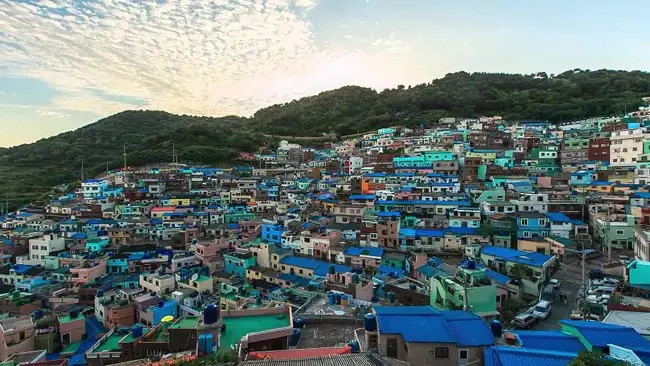
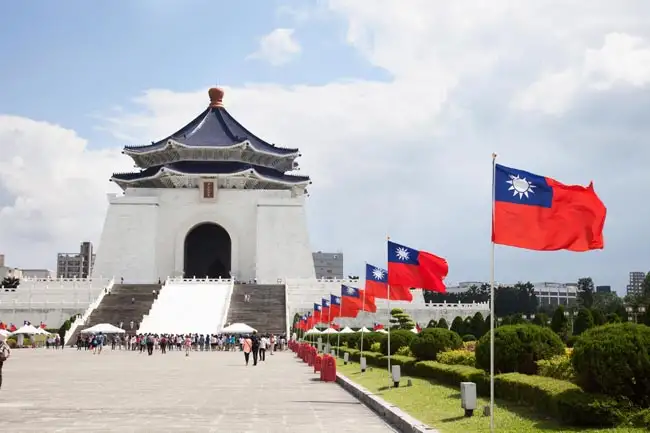
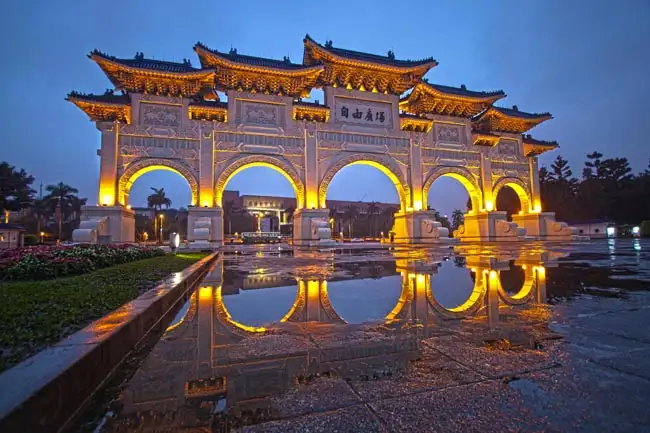
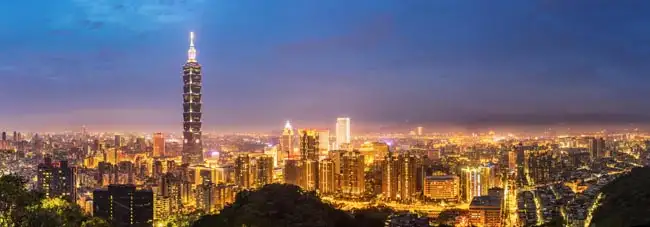
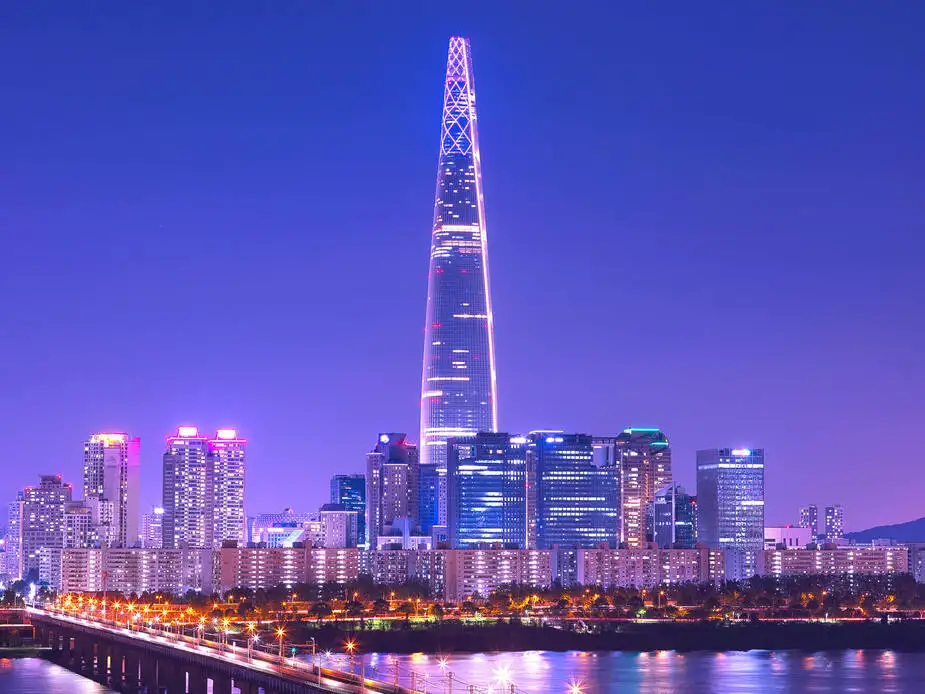
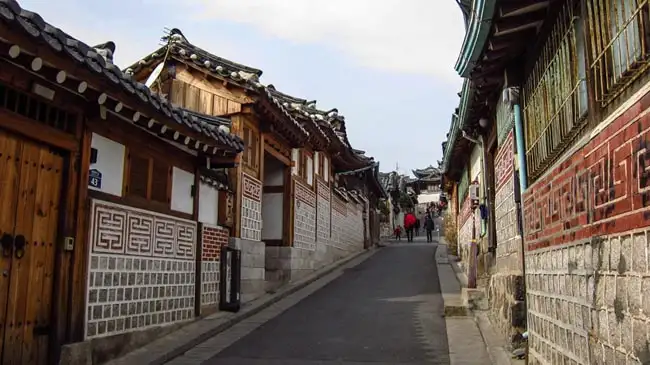
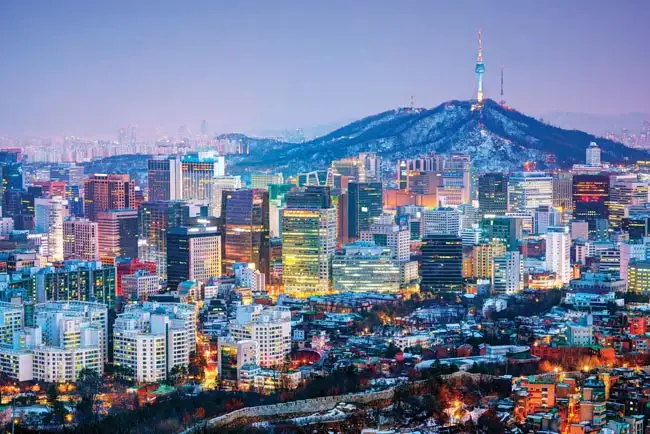
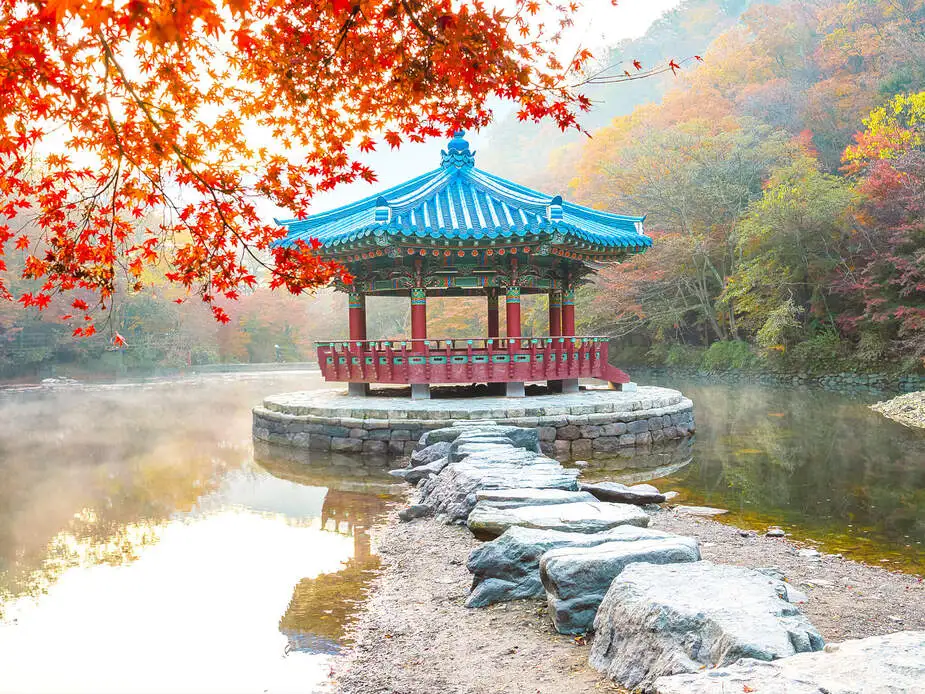
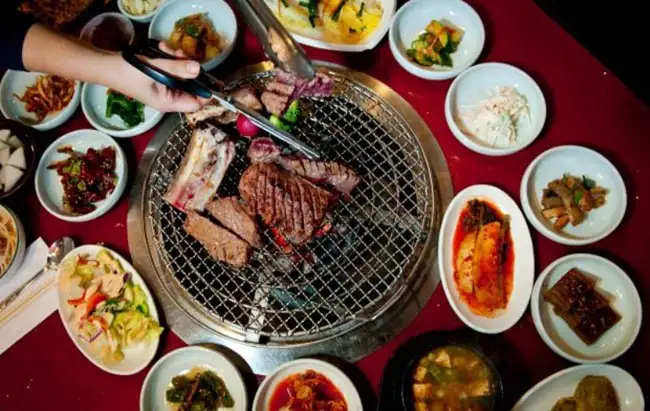
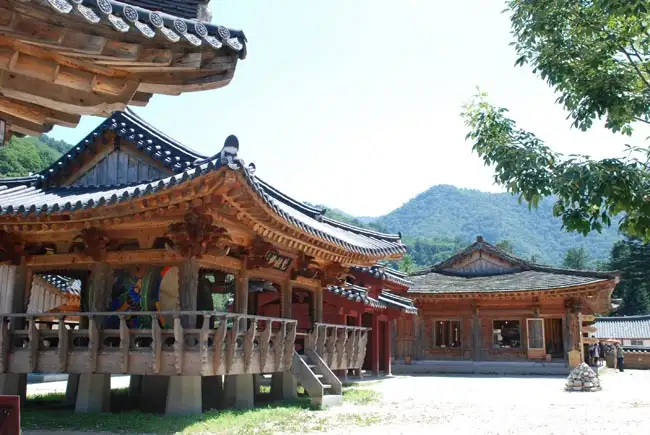
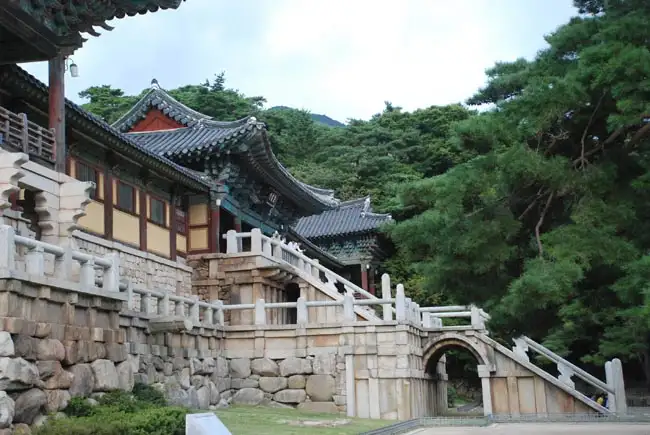
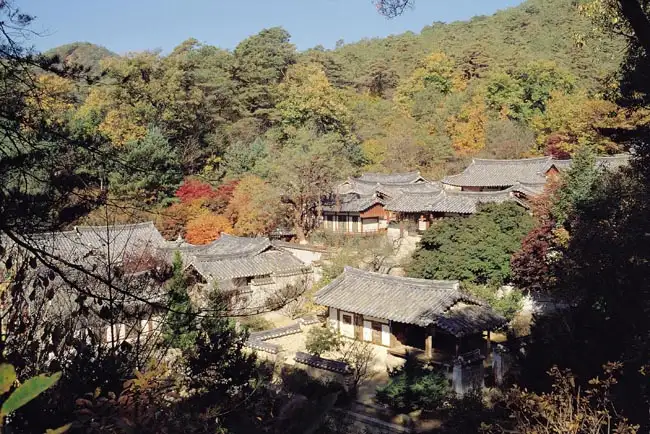
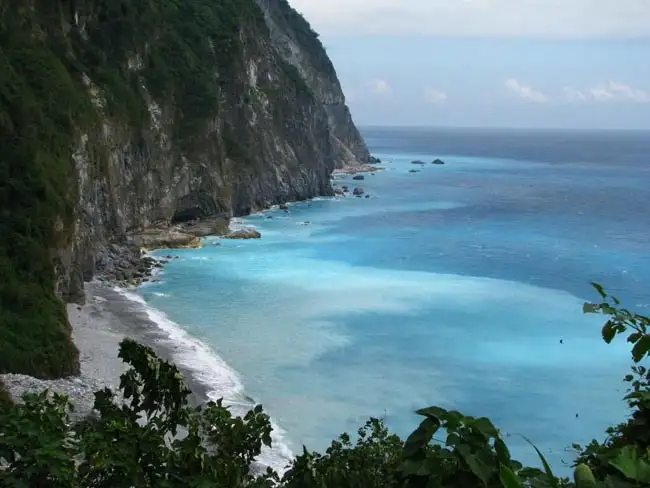
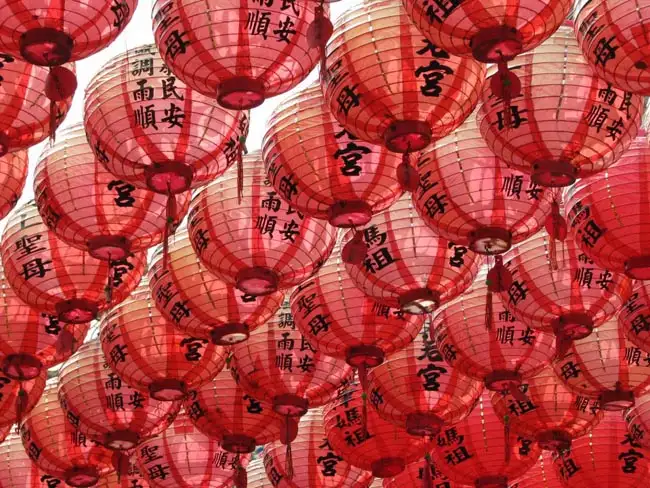
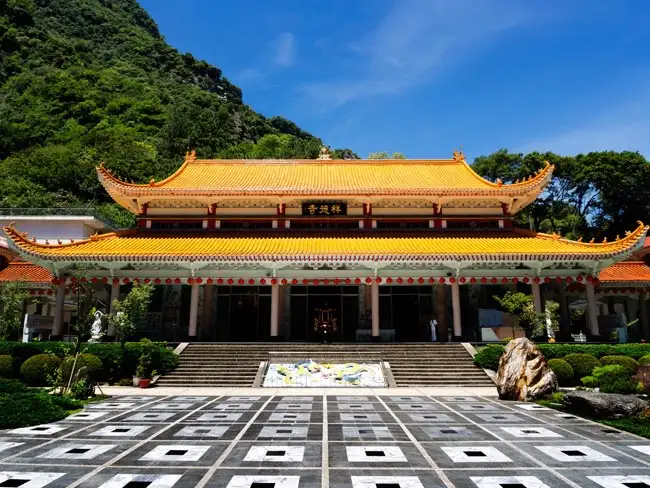
Excellent
Overall Rating
4.6
Extend Your Trip
This tour is part of a series that can be upgraded to make for a longer trip.
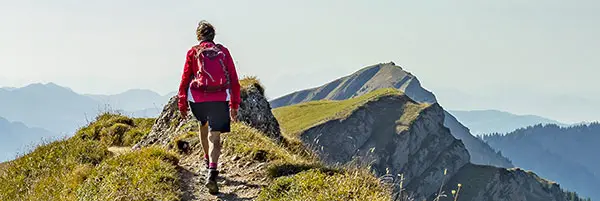
Fast and easy
Book this tour
Book your unforgettable adventure today! For any questions or advice, don't hesitate to contact us.
Have questions?
Contact Us
1-800-665-3998
- Final payment is due 90 days prior to departure.
- A non-refundable $500 USD deposit is payable at the time of booking
- Optional Single Supplement: $1320 USD (number of singles limited).
- Transferring to another tour or tour date is only permissible outside of 120 days prior to departure and is subject to a $100 USD change fee. (Read our cancellation policy for more info.)
Prices below are per person, twin-sharing costs in US Dollars (USD). Pricing does not include airfare to/from the tour and any applicable taxes. Get general information on flights to/from the tour.
Choose your departure date:
Frequently Asked Questions
- What is the maximum number of participants on a trip?Most of our tours carry a maximum of 18 participants; some tours (ie hiking tours) top out at 16. In the event that we do not achieve our minimum complement by our 90-day deadline, we may offer group members the option of paying a "small-group surcharge" as an alternative to cancellation. If all group members agree, we will confirm the trip at existing numbers; this surcharge is refundable in the event that we ultimately achieve our regular minimum. If the small group surcharge is not accepted, we will offer a refund of your deposit or a different trip of your choice.
- Can I extend my tour either at the beginning or end? What about stopovers?Yes, you can extend your tour either at the beginning or the end and we can book accommodation in our tour hotel. Stopovers are often permitted, depending on air routing. Stopovers usually carry a "stopover" fee levied by the airline.
- How do I make a reservation? How and when do I pay?The easiest way to make a reservation is via our website; during office hours, you are also more than welcome to contact us by telephone.
A non-refundable deposit is payable at the time of booking; if a reservation is made within 90 days, full payment is required. Some trips require a larger deposit. If international airline bookings require a non-refundable payment in order to secure space or the lowest available fare, we will require an increase in deposit equal to the cost of the ticket(s).
Early enrolment is always encouraged as group size is limited and some trips require greater preparation time.
Once we have received your deposit, we will confirm your space and send you a confirmation package containing your trip itinerary, any visa/travel permit related documents, invoice, clothing and equipment recommendations, general information on your destination(s), and forms for you to complete, sign and return to us. Your air e-tickets (if applicable), final hotel list, final trip itinerary, and instructions on how to join your tour, will be sent approximately 2-3 weeks prior to departure. - What about cancellations, refunds, and transfers?Please review our cancellation policy page for details.
- I am a single who prefers my own room. What is a single supplement?All of our tours have a single supplement for those who want to be guaranteed their own room at each location.
This supplement is a reflection of the fact that most hotels around the world do not discount the regular twin-share rate for a room by 50% for only one person occupying a room. Most hotels will give a break on the price, but usually in the range of 25-30% of the twin-share rate. This difference, multiplied by each night, amounts to the single supplement.
The conventional amount can also vary from country to country and some destinations are more expensive than others for single occupancy. In order to be "single friendly," the supplements we apply are not a profit centre for us and we do our best to keep them as reasonable as possible.
On most tours we limit the number of singles available, not to be punitive, but rather because many hotels allow for only a limited number of singles; some smaller hotels at remote locations also have a limited number of single rooms available.
Please note that most single rooms around the world are smaller than twin-share rooms and will likely have only one bed. - Do you have a shared accommodation program?Yes! If you are single traveller and are willing to share, we will do our best to pair you with a same-gender roommate. On most of our tours, if we fail to pair you, we will absorb the single supplement fee and you will default to a single room at no extra charge. At some destinations, however, where single rooms are not significantly discounted, or not at all, we may apply a "mandatory" single in the event that we cannot find you a share partner. This is usually 50% of the usual supplement, but can be as much as 100%. If applicable, this proviso will be noted on each tour page on this website, on your invoice, and in our tour date/price book (available for download under "Resources").
Please choose a departure date!
